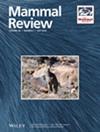Sperm Whales—Island Specialists, Are They on the Way to Extinction? Systematic Literature Review in a Global Context
Abstract
Background
Sperm whale population units, resident off inhabited islands, are an important source of ecosystem services for local communities and may be subject to greater anthropogenic pressures than their oceanic conspecifics.
Aims
The objectives of this review were to identify sperm whale-island specialists' habitats around the world and to assess the level of anthropogenic pressure on such nearshore populations. The hypothesis was that sperm whales with this ecological specialisation are rare and that the negative impacts they experience living close to inhabited shores may be also exacerbated by Anthropogenic Allee effect.
Materials & Methods
This study was conducted using a systematic literature review, following the principles recommended by the PRISMA guidelines, with a scoping of records of the presence of sperm whale social units in the territorial waters of countries around the world published between 2003 and 2023.
Results & Discussion
A review of 422 relevant research papers revealed only two places in the world where sperm whales with an island ecological specialisation exist, and there are negative trends in both. Such population units experience cumulative anthropogenic pressures 1.7–1.8 times higher than oceanic ones. The charisma and media popularity of sperm whales, combined with the rarity of observation sites for this species, may increase pressure, potentially accelerating their extinction (Anthropogenic Allee Effect). The results of the study are presented in the form of a narrative synthesis, tables and a map.
Conclusion
Determining the ecological specialisation of sperm whale population units should be a key component of management at both the local and species level. Exploitation of ecosystem services provided by island specialists should be strictly regulated in favour of sustainability, in order to preserve this rare ecological type.



 求助内容:
求助内容: 应助结果提醒方式:
应助结果提醒方式:


